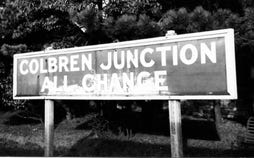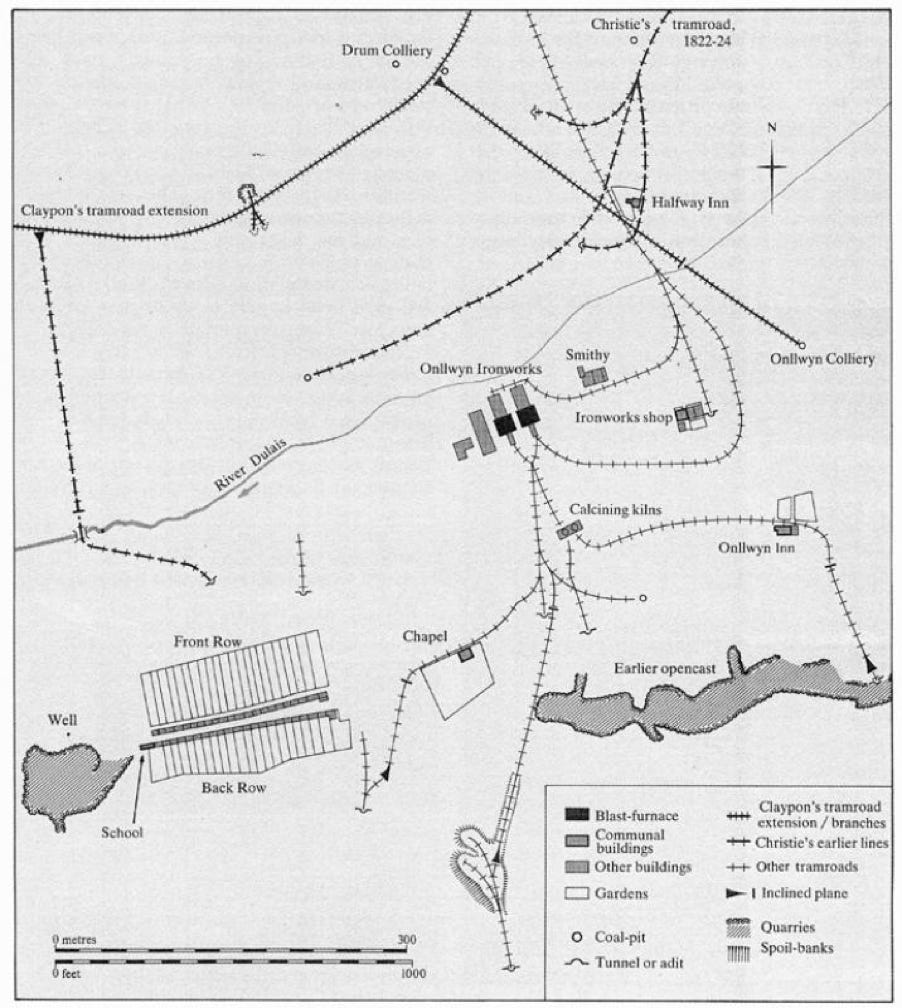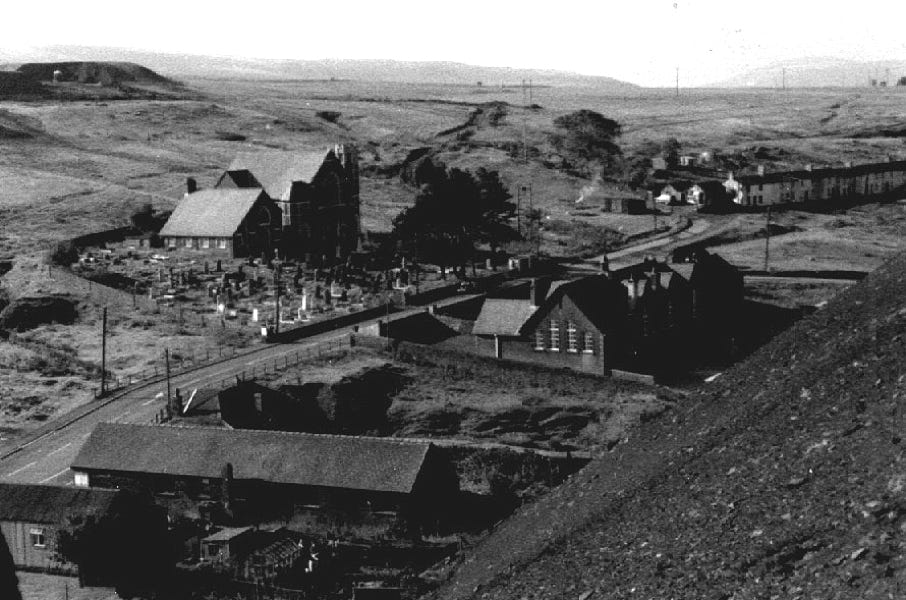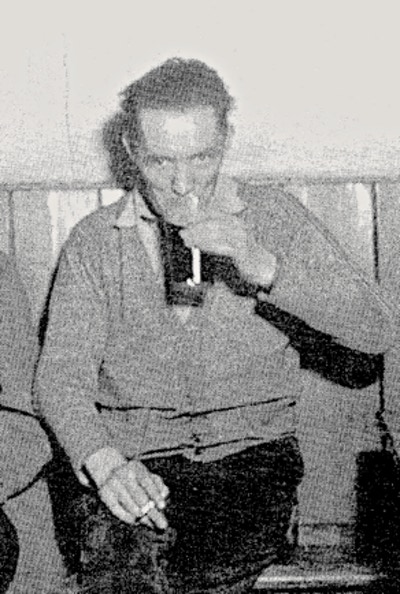Joan’s husband, David Jones, was unrelated to her before marriage: his father, also David, was originally from Cardiganshire and is believed to have found some fame as a “pit-sinker” – one who took the lead in driving new shafts and drifts into the ground to make new mines or allow access to new seams. He is also believed to have been a member of the Church of Jesus Christ of Latter Day Saints (otherwise known as the Mormons) and it is in this connection it is said that he took himself off to the USA at some point in the 1870s, this time to drive wells for water in the Utah desert – the state capital, Salt Lake City, was and still is the headquarters of the Mormons (from GB Evans, 2012).
David’s brother, Owen Jones (1859-1931) is worth examining for a while. He is not directly connected to our Jones family except through the marriage of his brother (David, to Joan Jones, above), and the marriage of his wife’s brother (Samuel Bryant to Jennet Jones). So again, we have, in him, another third party pivot around which our families revolve. He provides an interesting example of someone whose life, tinged seemingly with ill luck and tragedy, did not follow any neat or predictable pattern. Born in 1858, he is found in Back Row, Onllwyn, lodging in 1881, as a single man aged 22, with John Bryant and his sister, Mary; both also single and in their twenties – a sort of nineteenth-century house share. The equally unfortunate Bryant pair had also had to fend for themselves since the death of their parents in 1869-70.
Perhaps predictably, Owen Jones married his co-lodger Mary Bryant in 1882 and they had three children between then and 1890, when Mary died suddenly, at about the age of 34, quite possibly in childbirth. The luckless Owen is back again to being recorded as a “Boarder” in 1891: this time along the Row with his brother, David and his wife, Joan Jones. As a single working-man again, but now with three young children, two of them “Boarders” with him, it is entirely understandable that his youngest son, Samuel (1889-1960) should now be in the care of yet another family, the Williams, two doors along Back Row. Further adding to the mix in this house is the presence of David Jones senior, back from the USA, and himself now also a widower, shown there in 1881 aged 68.
In the 1881 census we can see firstly Samuel Jones as a two year-old in the first (Williams) household. The last household shows David and Joan Jones, four of their children, then David Jones senior, his son Owen Jones and another of his children, Mary Ann Jones. Owen’s remaining child, David John Jones, is shown on the next page. So again, a Back Row cottage manages occupancy into double figures across three generations. Again, a Back Row cottage manages occupancy into double figures across three generations.
Despite this apparently precarious start, Sam Jones went on to combine a collier’s job with a successful local newsagent’s business from the 1920s in Dyffryn Cellwen, ably continued by his daughter and other children who seem, in the mid twentieth-century, to have gravitated themselves and through marriage to other local businesses: Williams Bakery, Evans’ Fish & Chips & Billiard Hall and – over at Coelbren – later tenancy of the Price’s Arms: one of Samuel Jones’ sons, David (“Dai”) Jones, became the landlord there from 1942 until the early 1960s. Dai Jones is shown below with characteristic pint and cigarette, in the wooden-benched interior of the Prices Arms (source: Davies, 2014).
In case anyone thinks that this fusion between Jones and Bryants was a little too close for propriety and healthy breeding, let us be clear that there are three separate families here (two Jones, one Bryant); the fathers of each came originally from three separate counties: William Jones (1820-1879) was the local, from Glamorgan (Neath), David Jones from Cardiganshire and Samuel Bryant from Carmarthenshire. Here we sense perhaps the unseen, atavistic deterrent – often exercised in rural areas - to unsuitable marriage, stopped also, no doubt, by well rehearsed and orally dispensed family histories from the older generation. Nonetheless, to what extent people in these areas knew - and maybe pretended not to know - how well they were related to their neighbours is a question that has always interested me. For example it is interesting perhaps to reflect that while it is certain that the sober-living folk in nearby Coelbren House were being tested by the altogether more worldly landlord Dai Jones and his customers in the Price’s Arms, just across the road; that they then knew or acknowledged that their tormentors were “family”, is perhaps less so. Indeed, whereas now we search diligently through the ages and records for every last link to our families, these same families in distant times were probably much more discerning in who they accepted as such, especially given the sheer numbers of relatives implicated in these close-knit areas.
By 1901, the family has moved to Price’s Row, Coelbren where David and Joan are shown with 8 of their children ranging in age from 15 to 1. This family was now well used to squeezing themselves into small houses. David Jones died in 1909, aged 50, and by 1911 his widow Joan has moved again – this time to 45, Roman Road, Banwen, in which same street two of her widowed sisters also lived (as we have seen Ann Jeffreys and Mary Powell lived together with their boarders at number 48). Joan Jones had no need of boarders as she still had 6 of her own children and a niece, Emily Ann Jones, 14, daughter of her brother John Jones.
By 1921, she has moved to Bethel Street, Glynneath, perhaps a pleasant location giving on to the river and is shown there with three of her children, all as yet unmarried: Owen John (21), Mary Jane (26) and Rosina (23). Owen is a miner at the Empire Colliery, Glynneath, but out of work; Mary and Rosina are ‘Post Girls’.



